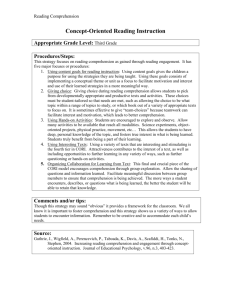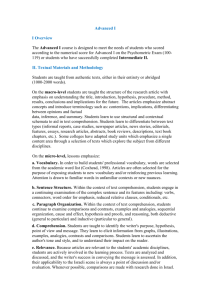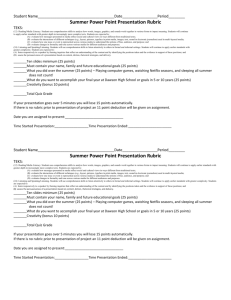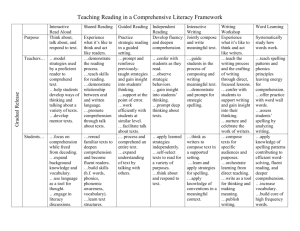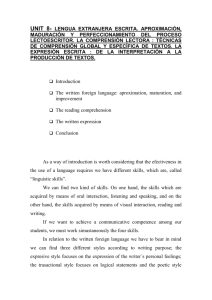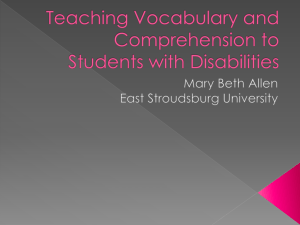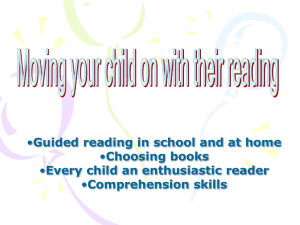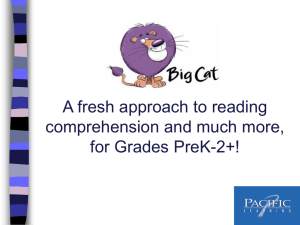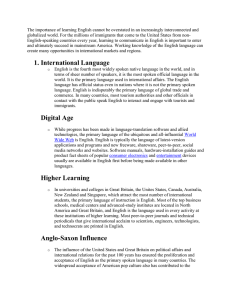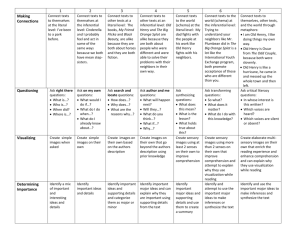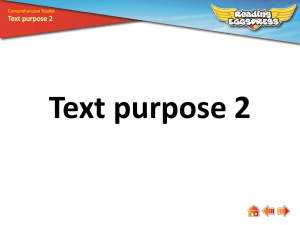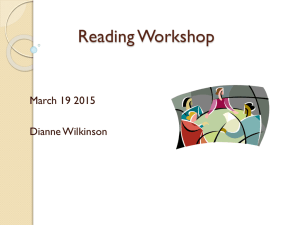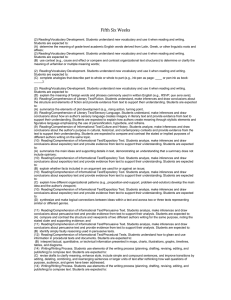A checklist for assessing the comprehension
advertisement
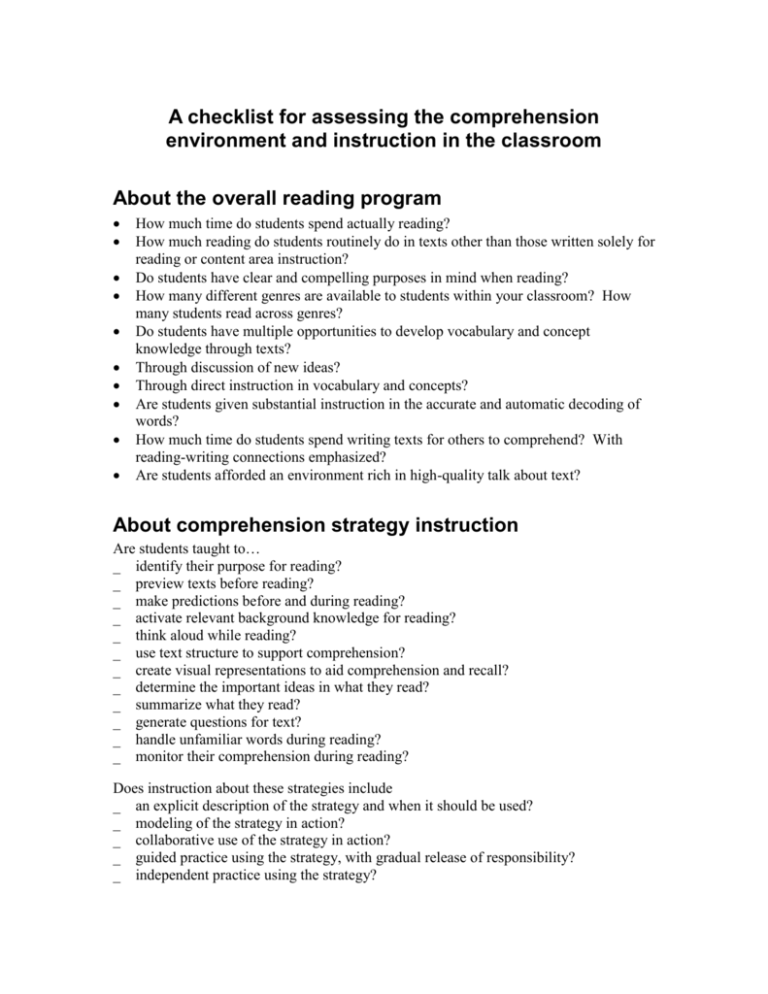
A checklist for assessing the comprehension environment and instruction in the classroom About the overall reading program How much time do students spend actually reading? How much reading do students routinely do in texts other than those written solely for reading or content area instruction? Do students have clear and compelling purposes in mind when reading? How many different genres are available to students within your classroom? How many students read across genres? Do students have multiple opportunities to develop vocabulary and concept knowledge through texts? Through discussion of new ideas? Through direct instruction in vocabulary and concepts? Are students given substantial instruction in the accurate and automatic decoding of words? How much time do students spend writing texts for others to comprehend? With reading-writing connections emphasized? Are students afforded an environment rich in high-quality talk about text? About comprehension strategy instruction Are students taught to… _ identify their purpose for reading? _ preview texts before reading? _ make predictions before and during reading? _ activate relevant background knowledge for reading? _ think aloud while reading? _ use text structure to support comprehension? _ create visual representations to aid comprehension and recall? _ determine the important ideas in what they read? _ summarize what they read? _ generate questions for text? _ handle unfamiliar words during reading? _ monitor their comprehension during reading? Does instruction about these strategies include _ an explicit description of the strategy and when it should be used? _ modeling of the strategy in action? _ collaborative use of the strategy in action? _ guided practice using the strategy, with gradual release of responsibility? _ independent practice using the strategy? About other teaching considerations Are students helped to orchestrate multiple strategies, rather than using only one at a time? Are the texts used for instruction carefully chosen to match the strategy and students being taught? Is there concern with student motivation to engage in literacy activities and apply strategies learned? Are students’ comprehension skills assessed on an ongoing basis? Duke, N.K. & Pearson, P.D. (2002). Effective practices for developing reading comprehension. In Farstrup, A.E. & Samuels, S.J. (Eds.), What Research has to say about reading instruction (p.235). Newark, DE: International Reading Association.



